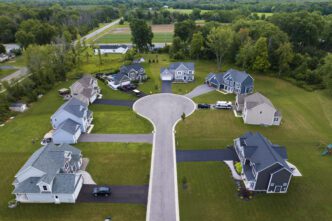Executive Summary
- Housing experts identify restrictive zoning, land-use barriers, and financial policies as the primary causes of the U.S. housing affordability crisis.
- According to the National Association of Home Builders, regulations at the local, state, and federal levels account for approximately 24% of a new single-family home’s cost, or about $94,000.
- Economists suggest that easing regulations to increase the housing supply and reducing government spending to lower interest rates are key to improving market conditions.
- Prolonged housing unaffordability poses a significant threat to wealth creation for the next generation of potential homebuyers.
Housing policy experts and economists assert that the U.S. housing affordability crisis is a direct result of decades-old systemic issues, primarily driven by restrictive zoning, land-use barriers, and financial policies that have severely limited housing supply. These factors, rather than recent market shocks, are identified as the foundational causes for skyrocketing home prices across the country.
“There are just many, many ways to halt and stop development,” said Joseph Gyourko, a professor of real estate and finance at the Wharton School at the University of Pennsylvania. “And we’ve gotten very, very good at it in the United States.” This resistance to new construction, experts agree, is a core component of the current housing shortfall.
The financial impact of regulations is substantial. According to Jim Tobin, president and CEO of the National Association of Home Builders (NAHB), regulatory burdens contribute significantly to the problem. “We estimate that 24% of the cost of a single-family home is embedded in regulations at all three levels of local, state and federal government,” Tobin told Fox News Digital. “That comes out to roughly $94,000 in regulatory costs.”
Tobin further explained that some local governments deliberately use regulations to slow or prevent growth, which adds both time and expense to building projects. Delays in approvals while builders hold land and pay taxes, coupled with requirements for developers to install infrastructure like sewers, roads, and water lines, fold directly into the final price of a home.
Economists argue that the path to a more stable market involves addressing these supply-side constraints. E.J. Antoni, chief economist at the Heritage Foundation, stated that the housing market will not recover until building becomes easier and borrowing costs decrease. He suggested that reducing government spending to ease pressure on interest rates and rolling back burdensome regulations would “increase production of new homes.”
Future Outlook
Industry leaders warn that the consequences of prolonged unaffordability extend beyond market dynamics, impacting the financial future of younger generations. “The more we delay ownership, the later we delay wealth creation in this country,” Tobin said. “And that’s the challenge ahead of everybody right now.”








